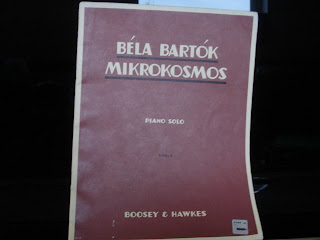I thought I'd start this week's blog with a Youtube clip. Sorry about the blurry image. That's a close up of a metronome, and the video is a short introductory presentation by my son on its uses - with a surprise ending! (To those who experience motion sickness, you may want to avoid watching.)
Here's a better picture of the one we use:
Now I'm not going to claim to be an expert on metronome use. On reading around, it seems that there's a bit of controversy about their use. Do they help or hinder developing a natural rhythm? Do they destroy musicality? These are debates that you'll come across. Instead of giving my opinion, I've found you a good discussion on the history of the metronome and its pros and cons here.
We've only been using a metronome for a little while. My son is quite good with maintaining a consistent rhythm (unless he's fed up and in a hurry of course!) but I think his teacher has asked him to use one to help him keep going at a steady pace when he's reading music and playing. (For those unfamiliar with Suzuki method, the children learn to play by ear and they aren't taught to read music until later.) We're using it with this book:
Apparently this was written by Bartok to help his son learn to play the piano. It starts off very simply and takes the student through a variety of different playing patterns. The most useful thing about it is that it has the metronome speed marked at the top of each exercise piece. It's been fun using this book because my son loves the challenge of trying to keep pace with the metronome and it's provided a little variety in his routine practice sessions. (I should say, we do have to turn the metronome to face away from him or he's distracted by the moving hand.)
Other books we've used for reading are Alan Haughton's Play Piano Book 1 and Methode Rose. Methode Rose was quite difficult to source. If you're interested in using this book its ISMN is 979-05600-5019-5 and it looks like this:
We haven't used the three books in any particular order, completing one before moving on to the next. My son started with Methode Rose, but it gets quite technically difficult quite quickly, so then he went to Alan Haughton's book and worked his way through that. At the moment we're using both the Mikrocosmos and Methode Rose. One thing I would say is that it's been very helpful to really work on a piece and get it very good before moving onto the next one, while of course trying to maintain some kind of variety. Then it's also instructive to go back to the pieces you haven't looked at for a while to see if you can still read and play them well.
Our next book is this:
This is a most strange book and at the moment is completely incomprehensible, so I'm not going to say much more! But if you're looking for something interesting to study, look no further, Kurtag is your man.
More on books next blog




No comments:
Post a Comment